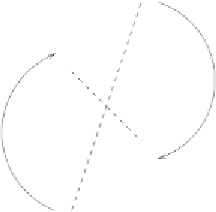Cryptography Reference
In-Depth Information
Nobody can prove when and why this is so; all there is are indications (for
example, making differential cryptanalysis harder; see Section 4.4.2). Using
product formation can sometimes even lead to the opposite. We will discuss
an interesting example in the next section.
4.1.5 The Image Is Gone, But We Still See It
The following example of a repeated image transformation was taken from
[Crutch]. I wrote an identical program; it is included on our Web site (it's
a program called
book/trans/trans.c
; see Appendix A.1) so that UNIX users
can experience the same surprise on the screen I had. The program vividly
demonstrates the effects of a product algorithm, and how one can get lulled
into a false sense of security.
For the sake of simplicity, we take any square image (rectangular formats would
also do the job, but they are more clumsy to handle). We take the image and do
a simple transformation: the image is right-rotated by 90 degrees and distorted,
as shown in Figure 4.3. We cut off the two protruding ends and paste them as
follows.
We repeat this transformation until the image appears gray. I used the 'Escher
knot' included as bitmap in the X Window system and changed it to 216
×
216
format. You can see the first few transformations in Figure 4.4.
The image will never turn uniformly gray, but it looks well mixed. Let's con-
tinue following up on the image series. We will see blurred rings that will
disappear again after 24 rounds. Such diffuse appearances alternate with the
Figure 4.3:
A simple image transformation.





